By Liz Ligawa
For a long time, I adhered to a belief system which denied a connection between personal experiences and collective realities. The individualism in which my upbringing was brined did not fully prepare me to dignify the personal realities of others. I filed the stories of others as exceptions to the truths I already held…well, that was until I began to realize how much the stories I dismissed shared similar characteristics, outcomes, properties, etc. So, I began to wonder, “Could my estimations be wrong?” Thankfully, my novice perspectives were challenged, and I grew to appreciate how the truth of individual experience sheds light on systemic or, collective realities. It is a good thing this transformation occurred before I found myself in social work as a community practitioner.
So, here I am. I joined the Prosper Waco team as the Director of Community Engagement on August 1st, and I am grateful for the strong ways my theological, and social work training prepared me to understand, and affect change in systems which can function to oppress, or marginalize- even when those are not the intended consequences. If you cannot tell, advocacy is my strong suit.
By now, you might be wondering: “What does this post have to do with its title?” Well, it is a little embarrassing to admit, but even with one month at the organization under my belt, the hardest question for me to answer is still, “What is Prosper Waco?” Now, now…before you encourage my boss to consider replacing me with someone else with greater acumen, let me just say, this is not an easy question to answer. Ask my boss.
One of the reasons I think I have had a hard time putting Prosper Waco into a more familiar context (even for myself) is that it is an organization which has philanthropic roots, but colloquial branches. Let me explain what I mean. Philanthropy, or its Greek beginnings, φιλανθρώπως, adds up to acting humanely, kindly, or promoting the welfare of others. Although the activities of Prosper Waco are philanthropic in the sense that they are driven to promote others’ welfare, the initiative does not fit a popular interpretation of philanthropy- one that has a monetary expression of benevolence. Instead, it operates, philanthropically, through collaboration among structures (organizations, companies, institutions, etc.) which already exist, and are familiar to the local community.
So, what does this have to do with the innkeeper? Well, in the parable of the Good Samaritan, there seems to be just one hero; or we think of the parable with our focus narrowed to just one helpful way to respond. But do we limit the good we can do by only filling the role of the Samaritan? In saying that, I realize there are several layers to this story. There are strong themes to be mined about the culture, biases, and social context- but that’s a study for another time. What I am curious about, however, is how our view of this narrative shapes, and informs our perspective on altruism. Do narratives like the Good Samaritan encourage altruistic behavior? I am not yet convinced.
Personally, I feel that the parable is more of a “calling out” than it is a “calling to”, but I also cannot ignore its utility in the conversations around who receives our help. However, what I think is important to pay attention to is the emphasis, and in my opinion, over-emphasis on individual efforts towards help. I wonder if we are less-likely to help if we feel like we are the only ones that can help. And if we approach helping others with the idea that it is all up to our individual efforts, how does that influence our interactions with our neighbor, and what do we miss by not seeing how others are also helping?
What I see when I look at this parable is philanthropy administered through collaboration, trust, relationship, and hope. I see collaboration because after the Samaritan placed the man on his donkey, he did not take him home. He took him to the inn. I see trust because when the Samaritan arrived at the inn, he did not stay with the dying man, but he entrusted him to the care of the Innkeeper. I see relationship because the Samaritan informed the Innkeeper that he would pay for additional costs on his return, and the Innkeeper agreed. I see hope because the Samaritan and the Innkeeper had to feel that their combined efforts would make a difference in the life they had encountered.
Promoting the welfare of others takes this type of attention…collaboration, trust, relationship, and hope. The dying man received help from what was already existing. We have a full cast of characters in our community. We have the wounded. We have those who tend to help in individual ways; but since they become easily overwhelmed with work that requires partnership, they go the other way if they can’t accomplish it alone. Most importantly, though, we also have those who are interested in what good we can to together. No, we do not adhere to the single story of the Samaritan being the only hero. We gladly accept the role of the Innkeeper.
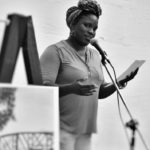 Elizabeth Ligawa is a recent graduate from Truett Theological Seminary, and the Diana R. Garland School of Social Work, earning both her Master of Divinity, and Master of Social Work. Though her prized role is being a mother to her dear son, Elijah, Liz has a love for encouraging people to come together in ways that engender healthy communities. Her role as the Director of Community Engagement at Prosper Waco allows her the room to work in and among the many faces of her beloved Waco community. She may be reached at [email protected].
Elizabeth Ligawa is a recent graduate from Truett Theological Seminary, and the Diana R. Garland School of Social Work, earning both her Master of Divinity, and Master of Social Work. Though her prized role is being a mother to her dear son, Elijah, Liz has a love for encouraging people to come together in ways that engender healthy communities. Her role as the Director of Community Engagement at Prosper Waco allows her the room to work in and among the many faces of her beloved Waco community. She may be reached at [email protected].
The Act Locally Waco blog publishes posts with a connection to these Aspirations for Waco. If you are interested in writing for the Act Locally Waco Blog, please email [email protected] for more information.
by Jennifer Alumbaugh, LMFT
I’ve had the honor of reading an advance copy of Healing from Hidden Abuse by Shannon Thomas, LCSW in exchange for my feedback and honest review. Even before this book came out, I have been impressed with the integrity of Thomas’ reflections on psychological, emotional, and spiritual abuse from both the theological and the psychological standpoint. As a Licensed Marriage and Family Therapist with a degree in Theology and a personal history in a number of church communities, it is not often I encounter material that resonates with such unapologetic and unfaltering truth. Thomas’ Healing from Hidden Abuse is one such book.
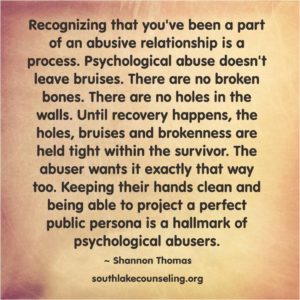 Healing from Hidden Abuse is organized into several parts: introduction with background on the 2016 research project, “Examining Patterns of Psychological Abuse;” moving into the Basics of Psychological Abuse—a kind of 101 primer for anyone previously unfamiliar; the Six Stages of Recovery: Despair, Education, Awakening, Boundaries, Restoration, Maintenance; an address to family and friends of survivors; a resource section including a bibliography; and a collection of personal reflection and journal prompts to move the reader through their own process or to facilitate group process.
Healing from Hidden Abuse is organized into several parts: introduction with background on the 2016 research project, “Examining Patterns of Psychological Abuse;” moving into the Basics of Psychological Abuse—a kind of 101 primer for anyone previously unfamiliar; the Six Stages of Recovery: Despair, Education, Awakening, Boundaries, Restoration, Maintenance; an address to family and friends of survivors; a resource section including a bibliography; and a collection of personal reflection and journal prompts to move the reader through their own process or to facilitate group process.
In both my personal healing process and my professional clinical work with clients, when I consider materials to use or recommend, I look for several things:
Does the material have substance? I tend to shy away from materials that are too geared toward the beginner in self-awareness. I want something that is accessible to both the novice and the seasoned professional. I look for content that will inform, challenge, and inspire me.
Is the information clinically sound? Is there research and data that backs up the claims the author is making? Does the author have personal and/or professional experience in the field? —I want to be able to trust the author. I also evaluate whether or not the content holds water when I consider my own research, education, training, and clinical experience.
Is it clinically substantial while at the same time accessible to laypeople who are not mental health professionals and who may not be as familiar with the language of the profession? I want to use material that can connect with people who are engaging from a variety of professions, education levels, and experiences.
Is the language inclusive and intersectional? Is there an over-all cultural competence across a variety of identities? Especially in this time, I keep a look out for material that is gender and identity inclusive and retains minimal to no assumptions about identity and relationships.
Is there any bias in the content—skewed toward one experience over another—rather than encompassing the broad range of possible experiences?
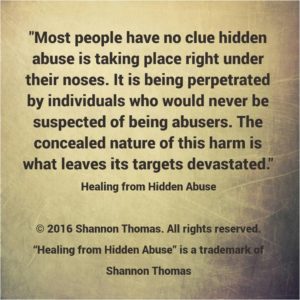 I’m pleased to report that Thomas’ work meets or exceeds my criteria, for the most part. While there is attention to dispelling the myths about abusers being only certain genders, there is a use of binary gender terms.
I’m pleased to report that Thomas’ work meets or exceeds my criteria, for the most part. While there is attention to dispelling the myths about abusers being only certain genders, there is a use of binary gender terms.
This book is deeply relevant and meaningful to anyone who has survived psychological and spiritual abuse from parents, pastors, partners, co-workers, friends, and others in their community. Beyond my resounding recommendation of this book to anyone who has or is surviving “Hidden Abuse,” I recommend it to anyone who loves, supports, is friends with a survivor. The education and insight available in this book is valuable to anyone striving to cultivate healthy, authentic, and loving relationships free from toxic dynamics.
In addition to being a mental health professional who supports others in their healing and recovery process, I have personally experienced psychological and spiritual abuse and continue to do the work of maintaining my recovery. It is these experiences especially which have motivated and inspired me to enrich my education and training in this specific area in order to be able to serve clients in need of this particular healing work. I center my own work as well as the process through which I guide my clients, in love and truth. What comes under attack with psychological and spiritual abuse is the truth, and learning to trust one’s self, one’s own intuition, and even one’s own spiritual experience is a core component in the healing process. Many survivors of psychological abuse have had the profoundly invalidating experience of not being believed when they reach out to others for help. If you receive nothing else from this blog post, I hope it is this truth:
I believe you. You matter. Your experiences, your pain, your grief, is real. There is a way out of despair. You don’t have to suffer alone or in silence. You are worthy of Love. You deserve to live a thriving life, as your whole and authentic self.
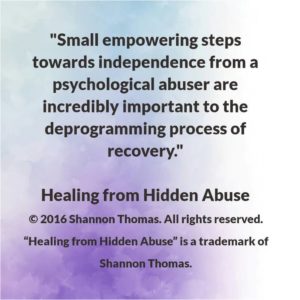 I will be using this text in my practice with clients individually, as a group facilitator, and as a professional development consultant providing trainings to various community agencies—police departments, domestic violence programs and shelters, and other mental and social service organizations. If you have had or think you may have had an experience with psychological or spiritual abuse and would like some support in sorting through the recovery process, or if you are connected to an agency interested in a professional development training on psychological abuse, please contact me through the Enrichment Contact Us page.
I will be using this text in my practice with clients individually, as a group facilitator, and as a professional development consultant providing trainings to various community agencies—police departments, domestic violence programs and shelters, and other mental and social service organizations. If you have had or think you may have had an experience with psychological or spiritual abuse and would like some support in sorting through the recovery process, or if you are connected to an agency interested in a professional development training on psychological abuse, please contact me through the Enrichment Contact Us page.
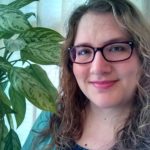 Jennifer Alumbaugh, MS is a Licensed Marriage and Family Therapist providing clinical and professional development consultation services at Enrichment Training and Counseling Solutions. She has extensive experience working with adolescent and adult survivors of psychological and spiritual abuse, trauma (sexual violence, childhood trauma, interpersonal violence); and complex PTSD. These, along with grief and loss work are her areas of specialization. Jennifer practiced as a mental health clinician throughout Los Angeles County working with children, youth, and their families from 2007-2012. In Central Texas, Jennifer has worked as a Site Coordinator with Communities in Schools of The Heart of Texas at G.W. Carver Middle School; as an independent consultant and professional development trainer; and conference speaker. In 2016 Jennifer created an implemented a therapeutic creative writing program, Brave Young Voices, at Klaras Center for Families and at the Texas Juvenile Justice Department correctional campus at Mart, TX. She may be reached at: [email protected] or 254-405-2496.
Jennifer Alumbaugh, MS is a Licensed Marriage and Family Therapist providing clinical and professional development consultation services at Enrichment Training and Counseling Solutions. She has extensive experience working with adolescent and adult survivors of psychological and spiritual abuse, trauma (sexual violence, childhood trauma, interpersonal violence); and complex PTSD. These, along with grief and loss work are her areas of specialization. Jennifer practiced as a mental health clinician throughout Los Angeles County working with children, youth, and their families from 2007-2012. In Central Texas, Jennifer has worked as a Site Coordinator with Communities in Schools of The Heart of Texas at G.W. Carver Middle School; as an independent consultant and professional development trainer; and conference speaker. In 2016 Jennifer created an implemented a therapeutic creative writing program, Brave Young Voices, at Klaras Center for Families and at the Texas Juvenile Justice Department correctional campus at Mart, TX. She may be reached at: [email protected] or 254-405-2496.
The Act Locally Waco blog publishes posts with a connection to these Aspirations for Waco. If you are interested in writing for the Act Locally Waco Blog, please email [email protected] for more information.
By Harper Hoover
 Young historians around the world will soon begin the process of months of historical research that leads to National History Day. As the competition springs to life for another year, I grow more and more thrilled at the idea of history fair. American history as never been more fun than this (unless presented in rap musical form, of course.) My name is Harper Hoover, and I recently competed at National History Day at College Park, Maryland, where I won first place in the division of Junior Individual Performance. History fair is near and dear to my heart for many reasons, and my journey this past year includes quite a few memorable ones.
Young historians around the world will soon begin the process of months of historical research that leads to National History Day. As the competition springs to life for another year, I grow more and more thrilled at the idea of history fair. American history as never been more fun than this (unless presented in rap musical form, of course.) My name is Harper Hoover, and I recently competed at National History Day at College Park, Maryland, where I won first place in the division of Junior Individual Performance. History fair is near and dear to my heart for many reasons, and my journey this past year includes quite a few memorable ones.
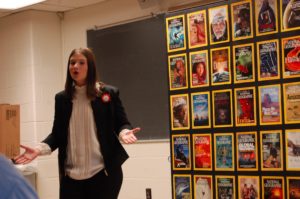 Creating a National History Day project takes A LOT of work. It may not be exactly “life consuming,” but I spent many hours on my performance to make it historically accurate, interesting and as sharp as possible. This past year, my performance was on the early history of the National Geographic Society and how it has changed the world as we know it. As a part of my research, I had the opportunity to speak to people involved with National Geographic, such as their archivist staff, and I was able to attend a lecture led by one of their photographers at the Perot Museum in Dallas. When my ATLAS 8th grade class visited the Washington D.C. in May, I was able to visit the actual archives deep inside the National Geographic Headquarters (I even ate lunch there; I recommend their chicken.) The very kind and patient archivists gave me a tour of the thousands of photographs held there, and told me about the history of their photography. The experience was a once in a lifetime, but the best part? Unexpectedly seeing CBS correspondent Mo Rocca in the lobby.
Creating a National History Day project takes A LOT of work. It may not be exactly “life consuming,” but I spent many hours on my performance to make it historically accurate, interesting and as sharp as possible. This past year, my performance was on the early history of the National Geographic Society and how it has changed the world as we know it. As a part of my research, I had the opportunity to speak to people involved with National Geographic, such as their archivist staff, and I was able to attend a lecture led by one of their photographers at the Perot Museum in Dallas. When my ATLAS 8th grade class visited the Washington D.C. in May, I was able to visit the actual archives deep inside the National Geographic Headquarters (I even ate lunch there; I recommend their chicken.) The very kind and patient archivists gave me a tour of the thousands of photographs held there, and told me about the history of their photography. The experience was a once in a lifetime, but the best part? Unexpectedly seeing CBS correspondent Mo Rocca in the lobby.
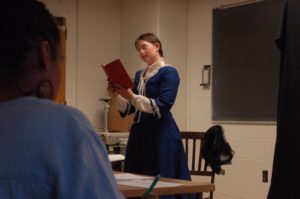 Spending a great amount of time on the computer polishing my research undoubtably made my project stronger, but the competition is by far the best part of history fair. Regional competition held at Baylor consists of performing in the early hours of dawn, then waiting all day for the results to be announced. State brings even more excitement and anxiety, where you have to perform in morning preliminary rounds, and hopefully again in the afternoon finals. Late afternoon brings the awards ceremony with hundreds of nervous teenagers in a confined space (yikes.) Many students go home empty handed, but the others are soon to embark on a very intense, yet very rewarding, journey to Nationals.
Spending a great amount of time on the computer polishing my research undoubtably made my project stronger, but the competition is by far the best part of history fair. Regional competition held at Baylor consists of performing in the early hours of dawn, then waiting all day for the results to be announced. State brings even more excitement and anxiety, where you have to perform in morning preliminary rounds, and hopefully again in the afternoon finals. Late afternoon brings the awards ceremony with hundreds of nervous teenagers in a confined space (yikes.) Many students go home empty handed, but the others are soon to embark on a very intense, yet very rewarding, journey to Nationals.
Competing at the National level (or even in State finals) is similar to being nominated for an Oscar. Whether you place or not, your project is already in the very top percentage of your competitors. I’ve seen countless projects compete at Texas History Day that are better than projects at the National level from other states. While it may be easy to get caught up in the lights of Nationals, it really is amazing to be surrounded by some of the best young historians in the world, let alone compete with them. Trading state buttons may be the most important social event of NHD, but growing closer with my classmates, competitors and fellow Texans is definitely one of my favorite parts of the experience (but buttons are pretty cool too.)  This year, I’ve competed with students from Guam, South Korea, Guatemala and more- people from countries I may never visit, all because of National History Day.
This year, I’ve competed with students from Guam, South Korea, Guatemala and more- people from countries I may never visit, all because of National History Day.
Don’t get me wrong, the competition is grueling and very nerve-racking. I’ve walked into my finals room before thinking, “What are my first words?” “Did I forgot a prop?” “I don’t have enough sources!” Yet, I’ve managed not to pass out at any competition yet. This year, I was very lucky to do well in my performance and to have judges that appreciated my work.
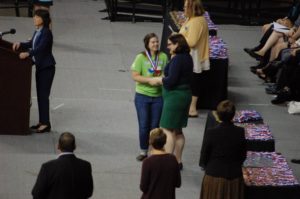 The awards ceremony at Nationals is possibly the most anxious three hours of the entire week. It consists of countless minutes of talking until your category is called. Then your stomach sinks to your feet, and it’s hard to remember you’re “having fun.” The feeling I was overwhelmed with when they called my name was one of shock, excitement and honestly just a lot of confusion. I sprinted down the stairs, whether to keep the ceremony moving or because I couldn’t stand to walk. I had done it!
The awards ceremony at Nationals is possibly the most anxious three hours of the entire week. It consists of countless minutes of talking until your category is called. Then your stomach sinks to your feet, and it’s hard to remember you’re “having fun.” The feeling I was overwhelmed with when they called my name was one of shock, excitement and honestly just a lot of confusion. I sprinted down the stairs, whether to keep the ceremony moving or because I couldn’t stand to walk. I had done it!
At the beginning of the last year, my social studies teacher, Mr. Wright, had us write down a goal for the year. I could have written “To pass the STAAR test” or “Make A Honor Roll”, but instead I wrote a goal I thought I couldn’t achieve – to win National History Day. As I share my experience with others or look back at this summer, all I am is thankful. Thankful that the dice rolled my way, thankful for my family and friends who pushed me to do the best I can. I’m thankful for my church and school family, my school district and teachers who give so much so that I can have an opportunity like this, and really thankful for a community that supports me in whatever I do. There isn’t a day that goes by that I regret doing history fair, no matter how stressful it might have been. And I’m thankful that I didn’t give up.
 Harper Hoover is currently a freshman at Waco High School where she stays busy with band, choir, school and community theater, and her 3 cats. This was her fourth year competing in the NHD contest, and her second time to make it to Nationals. She would like to thank the Waco Scottish Rite Foundation, the Heart of Texas Regional History Fair and Waco Independent School District for making her journey to Nationals possible.
Harper Hoover is currently a freshman at Waco High School where she stays busy with band, choir, school and community theater, and her 3 cats. This was her fourth year competing in the NHD contest, and her second time to make it to Nationals. She would like to thank the Waco Scottish Rite Foundation, the Heart of Texas Regional History Fair and Waco Independent School District for making her journey to Nationals possible.
The Act Locally Waco blog publishes posts with a connection to these aspirations for Waco. If you are interested in writing for the Act Locally Waco Blog, please email [email protected] for more information.
By Lizette LaStrape and Becky Boggus
The Support and Empowerment Program (SEP) at McLennan Community College provides a holistic support network to single parent students seeking a degree. To learn more information about the program and its purpose you can read a previous blog post written about SEP here: “Participants in MCC Program for Single Parents are hard-working, compassionate and driven!” Today we’d like to introduce you to one of our many exceptional students.
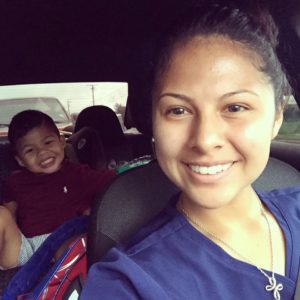 Gabriela Segura, who is known by her SEP Coaches as Gaby, is a student in the Occupational Therapy Assistant (OTA) program. Gaby is also a single parent of a three-year-old child and the first and only member of her family to pursue college thus far. She is compassionate, intelligent, and unwavering in her desire to provide a better life for herself and her son.
Gabriela Segura, who is known by her SEP Coaches as Gaby, is a student in the Occupational Therapy Assistant (OTA) program. Gaby is also a single parent of a three-year-old child and the first and only member of her family to pursue college thus far. She is compassionate, intelligent, and unwavering in her desire to provide a better life for herself and her son.
Completing a health professions program at MCC is highly demanding of a student’s time and skills. It is not unusual for Gaby to start her morning with clinicals or studying before the sun comes up and finish the day reading class materials long after her son goes to bed. In between, she plays soccer, reads her son books, cooks dinner, attends classes and study groups, and tries to catch her breath! Being a single parent in the OTA program for Gaby is “way more difficult than I thought. It takes a lot of my time.” Between having a full course load, clinical rotations and being a single parent, Gaby says that “finding the time to study and spend time with my son; just balancing everything” has been the toughest part of being a single parent student for her.
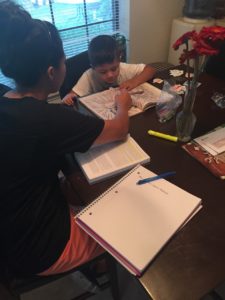 Still, through the late nights, the tests, skills assessments, and countless hours of studying she has persevered and will graduate in December 2016. A mere four months of classes, clinicals and sacrificing time away from her child remain before Gaby walks across the stage at commencement. She shared what graduation means to her – “It just means success! Success for me and him (her son), and my family overall. It will mean that I have accomplished the things that I set out to. I didn’t give up. I can accomplish anything and my son and siblings can too.”
Still, through the late nights, the tests, skills assessments, and countless hours of studying she has persevered and will graduate in December 2016. A mere four months of classes, clinicals and sacrificing time away from her child remain before Gaby walks across the stage at commencement. She shared what graduation means to her – “It just means success! Success for me and him (her son), and my family overall. It will mean that I have accomplished the things that I set out to. I didn’t give up. I can accomplish anything and my son and siblings can too.”
For first-generation students like Gaby, completing a college degree can mean changing the trajectory of their family for generations to come. Gaby states “going to college is something that I knew I had to do in order to live a different kind of life than my parents had.” Gaby shared that she didn’t receive messages about attending college from her family and states, “My mom never said, ‘Oh, you need to go to college.’ My messages came from school. That’s where I learned that education was the way to a better life. I saw how hard my mom had to work as a single parent. That’s not what I wanted. I wanted to have a job that I chose and that I enjoyed going to every day.”
In a world where first generation students are already overwhelmed with navigating the college system, add the additional responsibility of providing for a family, the lack of reliable childcare, transportation, financial resources and family support, and making it through college becomes a daunting goal. For these reasons, creating solid connections early in the college experience can make all the difference. MCC aims to provide just this type of connection for single parents and displaced homemaker students on campus through the SEP.
During her first semester of the OTA program, Gaby applied to SEP for the financial support, which the program provides in the form of childcare or transportation assistance to qualifying students. After being a part of SEP for several semesters, Gaby states, “This isn’t just help with daycare. I’ve gotten more out of this than I initially ever thought.” Gaby added, “My coach really is supportive and I like this program because the coaches are here to help with whatever you need. It’s a matter of just showing up and just asking.” In addition to financial support, SEP provides various skills-building workshops and one-on-one monthly support meetings with each student. Gaby stated, “They help with any resources that you need, and workshops are enjoyable and provide helpful information. I’ve learned how to be a better parent, how to communicate better and provide better nutrition for my son.”
While the decision to go to college was intimidating and her time as an OTA student has been challenging, Gaby shares that she has grown a lot personally through the experience – “I have proven to myself and others that I am smart. That I know more than I like to give myself credit for. That I am capable. That it’s not about the A’s, it’s about learning and understanding the material. That I am going to love what I do every day, because I already love it more, the more that I learn about it!”
To other single parents who are in college or thinking about attending college, Gaby has this to say: “If God has given you the opportunity, then just take it! God places everyone where they are for a purpose. Just never give up. Nothing is easy. The outcome is your reward.” In regard to being part of SEP, Gaby encourages other single parents by saying, “If you’re a single parent and completing a degree, you are working harder than most people. You have more responsibilities, and if you can have a program like SEP to help you get through this every day, then you can finish school!”
Every semester, SEP accepts new students with life stories similar to Gaby’s. SEP Coaches are ready and looking forward to each opportunity to take this journey of hard work and dedication with each single parent who dreams of earning a college education. SEP coaches are here to remind each potential student that, like Gaby, they are smart, capable and able of completing a college degree!
To learn more about the Support and Empowerment Program at MCC, call Lizette LaStrape at 299-8600 or Becky Boggus at 299-8569. To learn more about the Success Coach Program at MCC, call 299-UCAN (8226).
 Lizette LaStrape is a native Californian, now living in Waco since 2006. She has worked at McLennan Community College for the last eight years and is passionate about higher education and helping people reach their goals. She loves spending family time with her husband and two-year-old daughter.
Lizette LaStrape is a native Californian, now living in Waco since 2006. She has worked at McLennan Community College for the last eight years and is passionate about higher education and helping people reach their goals. She loves spending family time with her husband and two-year-old daughter.
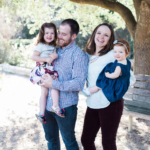 Becky Boggus is a Social Worker, a pastor’s wife, a mom, and a believer in education and strengthening Waco families. You can probably find her anywhere outside this summer: hiking in Cameron Park, chasing her kids around, and most likely eating a popsicle.
Becky Boggus is a Social Worker, a pastor’s wife, a mom, and a believer in education and strengthening Waco families. You can probably find her anywhere outside this summer: hiking in Cameron Park, chasing her kids around, and most likely eating a popsicle.
The Act Locally Waco blog publishes posts with a connection to these aspirations for Waco. If you are interested in writing for the Act Locally Waco Blog, please email [email protected] for more information.
By Jerrod Clark
Although the U.S. has only 5% of the World’s population, it has an astounding 22% of the world’s incarcerated population.[1] One out of three people in The U.S. have a criminal record.[2] 12 million Texans – nearly 45% of us – have a criminal record.[3] 4.7 million Texans have a conviction on their record.[4]
These criminal records severely restrict the chance to work and find housing. Employers and landlords can lawfully discriminate against those with convictions simply by asking applicants to “check the box” if they have a criminal record. And even if an individual doesn’t check the box, criminal background checks are at the fingertips of most employers and landlords via the convenient access through the internet.
In regard to hiring, these rules may seem reasonable at first glance, but the result is to exclude a massive pool of able-bodied individuals from being productive members of society. This creates further separation and segregation and ultimately increases crime.[5] If one cannot provide for him/herself with food and shelter, crime will be inevitable. This is a direct relationship that cannot be ignored any longer!
If one has been marked with a criminal record, the domino effect of systemic separation begins. We know that 50% of marriages end, most often due to financial stressors.[6] If one cannot get a job, the institution of marriage is at a higher risk for failure, and families are severed because of lack of income. Child Support fines, fees and interest mount and compound. Without income, a father then must go to jail if he cannot pay his financial obligations. Eventually his driver’s license will be revoked, often a final blow to one’s ability to access the few jobs that are available to felons.
Finding a place to live is another serious challenge for formerly incarcerated individuals. After an individual’s time has been served, he is released back into society to reintegrate. A foundational part of reintegration is to find a place to live. Landlords, however are legally allowed to discriminate on the basis of criminal record. Even if a formerly incarcerated person finds a landlord who is willing to rent to him, the cost is often prohibitive. Most landlords have a “3 times rule”—an applicant must have three times the rent in income to qualify and be eligible to be a potential applicant. This is a high bar for formerly incarcerated people who often struggle to get even a minimum wage job. These barriers often result in homelessness, which can have a negative effect on mental and physical health, making it even more difficult to find a job and a place to live. In other words, “the system” as it stands right now creates burdens on our community rather than alleviating them.
What can we do to change the system? I am not suggesting entitlement programs as a solution, I am suggesting equitable “in roads” and “on-ramps” or opportunities that allow one to get back on track and recover and develop from their past and present circumstance.
Here are three concrete possibilities:
- Encourage private businesses to adopt “Fair Chance Hiring Policies.” These policies do not require that employers ignore a job candidate’s past, but they do delay questions about criminal background until after the individual has had a chance to present his or her qualifications and make a case for being considered. Many employers have found that formerly incarcerated individuals make excellent employees if given the chance.
- Support bills like SB 1473which limits liability for landlords who rent to those with criminal records. SB 1473 is currently awaiting review under the Senate State Affairs Committee. Research show that crime, recidivism and homelessness decrease and production increases when housing options are increased for formerly incarcerated individuals.[7]
- Landlords could also work together to allow the working poor (including the formerly incarcerated) fair access to affordable housing. Instead of the “three times rule,” they could institute a “two times rule” for individuals who have been vetted by agencies like Mission Waco and Salvation Army. Waco landlords, please entrust organizations like these to be the “middle man” or advocate that can stand with and behind the individuals who need such a break just as Jesus stands with us.
As an educated white male with a livable wage job, my own experiences cannot fully equip me to represent the experiences of marginalized populations. However, because of my vocation and more than a decade of working with the “disqualified”– those “locked up and locked out” of society — I feel “qualified” to advocate with and on behalf of those affected by systems of oppression.
What qualifies me even more than that is what Christ did by taking my place on the Cross, making me a kid of the King and giving me citizenship to the Kingdom of God. This makes me doubly responsible to speak for those who cannot speak for themselves. I cannot be silent. I must not be afraid to speak up and speak out.
 Jerrod Clark is a Texas transplant. He came to Waco in 1996 to attend school and never left. He is a graduate of Baylor University’s Diana R. Garland School of Social Work and is the Social Worker at the Meyer Center for Urban Ministries. He has been working with the homeless since 1998. He and his wife, Carolina of seven years have two daughters, Nichole and Hannah Jean. They are active participants at Church Under the Bridge.
Jerrod Clark is a Texas transplant. He came to Waco in 1996 to attend school and never left. He is a graduate of Baylor University’s Diana R. Garland School of Social Work and is the Social Worker at the Meyer Center for Urban Ministries. He has been working with the homeless since 1998. He and his wife, Carolina of seven years have two daughters, Nichole and Hannah Jean. They are active participants at Church Under the Bridge.
The Act Locally Waco blog publishes posts with a connection to these aspirations for Waco. If you are interested in writing for the Act Locally Waco Blog, please email [email protected] for more information.
Notes:
[1] http://www.prisonstudies.org/news/more-102-million-prisoners-world-new-icps-report-shows
[2] http://www.sentencingproject.org/wp-content/uploads/2015/11/Americans-with-Criminal-Records-Poverty-and-Opportunity-Profile.pdf
[3] https://www.ncjrs.gov/pdffiles1/bjs/grants/244563.pdf
[4] http://www.texaspolicy.com/library/doclib/2007-11-PP28-licensing-ml.pdf
[5] http://publicpolicycenter.texascjc.org/wp-content/uploads/2014/12/TCJC-Fact-Sheet-SB-1473-Landlord-Protection.pdf
[6] http://www.apa.org/topics/divorce/
[7] http://publicpolicycenter.texascjc.org/wp-content/uploads/2014/12/TCJC-Fact-Sheet-SB-1473-Landlord-Protection.pdf
(Act Locally Waco loves Waco area entrepreneurs! For more posts about local entrepreneurs, please click here: Entrepreneurs of Waco. – ABT)
By Kathy Carr
“It makes me laugh thinking how a guy who grew up in the suburbs of Dallas now owns a farm… but I love what I do.” – -Gib Reynolds
Salads have become the epitome of healthy eating these days. There’s nothing quite like digging into a big bowl of veggie-filled goodness. Toss in some grilled chicken and even the carnivorous can reap the health benefits of the bountiful greens.
But with recalls becoming more prevalent, there’s an understandable lack of trust in the safety of supermarket produce. Wouldn’t it be nice if there was a way for farmers to safely grow leafy greens without harmful pesticides and exposure to all of the unhealthy yucks that make people sick?
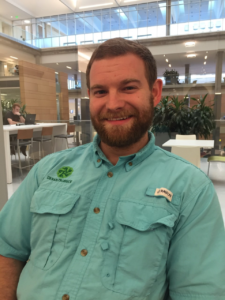 Gib Reynolds and his dad have done just that with Urban Produce. Together, this father-son duo have founded a large scale hydroponic lettuce farm where everything is controlled and grown indoors. The greens are grown “under glass” on floating rafts in nutrient rich ponds. This method provides a pesticide-free environment, and also eliminates the possibility of toxins and other environmental junk from making their way to the growing greens.
Gib Reynolds and his dad have done just that with Urban Produce. Together, this father-son duo have founded a large scale hydroponic lettuce farm where everything is controlled and grown indoors. The greens are grown “under glass” on floating rafts in nutrient rich ponds. This method provides a pesticide-free environment, and also eliminates the possibility of toxins and other environmental junk from making their way to the growing greens.
It’s quite an innovative idea. The funny part is that Gib grew up a city-boy in Richardson, Texas. He’s an Eagle Scout who flew model rockets competitively all around Eastern Europe. When Gib came to Baylor in 2008, he did study Entrepreneurship as an undergrad, but farming wasn’t his end goal.
Gib was interested in developing a portal that could connect investors and entrepreneurs, something similar to the Baylor Angel Network (BAN) where investors provide early-stage capital to entrepreneurs with business plans. Gib was highly involved in BAN as an undergrad and even became an analyst, so this seemed like a perfect fit.
After his Baylor undergraduate work, Gib continued his studies in the MBA program at Acton. He tossed around a couple of business ideas, but as he researched controlled environment agriculture and food production Gib realized there was a unique opportunity. And the idea for Urban Produce became a reality.
Gib’s long-term goal with Urban Produce was to build a huge lettuce company. Go big or go home is an underlying motto for all entrepreneurs, but with ninety-eight percent of lettuce in the US coming from California building a dominating lettuce company is a daunting mission. But with his self-proclaimed stubborn nature, Gib dug in his heels for the long haul.
Before any produce could even be sold, it was imperative for Urban Produce to receive certification for GAP/GMP (Good Agriculture Practices and Good Manufacturing Practices). The certification provided a layer of accountability to help customers trust this new startup company.
One of the initial challenges Urban Produce faced was finding those trusting customers and ensuring that distribution processes were in place to get the greens to customers in a timely fashion. Careful not to bite off too much too quickly, father and son built a loyal customer base one customer at a time. Confident in their product, the duo simply lets the lettuce do the talking. And the lettuce has been talking…a lot. So much so, that Urban Produce has expanded distribution beyond the confines of the Waco area. With regular deliveries to San Antonio and Houston, this lettuce is outright screaming.
Urban Produce trudges through the normal layers of regulations and inspections that come with being a food producer. Inspections and annual audits from the USDA help ensure proper growing and handling techniques. Gib feels that food safety is a paramount concern, so while the regulations may be at times be an annoyance, it’s all necessary in order to keep food safety on the front burner.
All-in-all, the proof is in the pudding… or maybe it’s better said, the proof is in the lettuce. No herbicides – no insecticides – no pesticides, but loads of tasty deliciousness. Gib’s hopes of putting Waco on the map as the “Lettuce Capital of Texas” may not be too far off.
 Kathy Carr is a long-time Wacoan. She’s a Baylor grad who just couldn’t’ get enough of the university so she now works there too. She loves the beach, a bowl of good ice cream and Netflix binges.
Kathy Carr is a long-time Wacoan. She’s a Baylor grad who just couldn’t’ get enough of the university so she now works there too. She loves the beach, a bowl of good ice cream and Netflix binges.
The Act Locally Waco blog publishes posts with a connection to these aspirations for Waco. If you are interested in writing for the Act Locally Waco Blog, please email [email protected] for more information.
by Mike Mallick
In the movie Field of Dreams, Kevin Costner is told to “build it and they will come.” On Rose Street, in the heart of East Waco, we have dreams big enough to fill a field: Dreams of proud families. Dreams of a proud history. Dreams of heroes. On Rose Street, dreams don’t come true; dreams are true. The heroes on our street built the Rose Street Path of Pride, Vision, and Justice to celebrate the greatness of humanity, the greatness of a neighborhood, and the greatness of dreams. “Build it for they have come.”
The Rose Street Path is a labyrinth, a walking path where the shade cools, the birds sing, and the route twists and turns in ever intriguing and unexpected directions, like the path of life itself. The greatness of humanity is that life is always complete, yet always advancing at the same time. As you walk along the path, your life is already complete, already heroic, and already successful, and yet each step brings about even more success. At the very center of the path is the place of completion, a place to relax on a shaded park bench and celebrate your life, a life of success, accomplishment, and gifts. It’s the place where your heroes stand proud of you each and every step of the way. Heroes you know, and heroes you don’t know. The hero within each and every one of us. God, the greatest hero of all.
Pride is having the whole world in front of you and heroes behind you. Being proud means that you lift people up without exception, no matter what, even when it hurts. On Rose Street, we don’t just talk about pride, we live it. We’re proud of parents. All of them. We’re proud of neighbors. All of them. We’re proud of you. All of you. And we’re proud no matter what. Being proud means knowing that there’s always someone standing behind you who’s proud of you. Always. Even when you don’t see it. On Rose Street, we have the courage to turn around and see who’s behind us. We have the courage to have heroes. We have the courage to Stand Proud.
Vision is the knowledge that the whole world in front of you is your gift to the heroes behind you. Our heroes (and God, the greatest hero of all) can know everything about us except one thing: They can’t know that they’re more important to us than the path before us, whatever that path may be, until we acknowledge them. On Rose Street, we turn around and look our heroes in the eye. We know that every glance behind us is a triumph over every sight in front of us. Every single one. There’s no such thing as an unsuccessful day. There’s no such thing as an unsuccessful life. Everything we do is a gift to God, to our heroes, and to the hero within us all. Everything. That’s what life is all about.
Justice is the knowledge that life is always greater than where you are, and love is always greater than who you are. Justice is standing behind all, bearing the burdens of all, in order to lift all. In the same way that life is always complete, yet always advancing, injustice has already been overcome, yet is daily being overcome. That’s simply what families do, and on Rose Street, we’re all family. Our family is our neighborhood, our city, and our world. Our family is you. On Rose Street we have the courage to lift up everyone, the just and the unjust, even when it hurts, in order to fight injustice every step of the way. We don’t talk the talk. We walk the walk. And we lift a whole city.
Walk with us and stand with us at this place of heroes! The Path is always open, and is located at 311 Rose Street, 3 blocks off Elm Avenue, on the right side of the street. Rose Street intersects Elm at Tony DeMaria’s BBQ, just past the East Waco Library. Please visit our website at www.riversidepride.org to share your dreams and share your walk! At the Rose Street Path, we stand proud. We walk proud. We make dreams come true.
 Mike Mallick is a Wacoan who stands behind everyone in the city, except in the realm of beards. He works with individuals, companies, and charities to build impact, strategies, and dreams.
Mike Mallick is a Wacoan who stands behind everyone in the city, except in the realm of beards. He works with individuals, companies, and charities to build impact, strategies, and dreams.
The Act Locally Waco blog publishes posts with a connection to these aspirations for Waco. If you are interested in writing for the Act Locally Waco Blog, please email [email protected] for more information.
By Natalie Garcia
It would be hard to miss what’s been in the news lately.
- The outrage over a Stanford student who received a six-month jail sentence for a rape conviction.
- Baylor University firing both its president and football coach, over an investigation showing a “fundamental failure” to appropriately respond to sexual assault incidents.
- The widespread belief that dealing with online harassment is now an inevitable part of trying to find love.
Even when the Young Adult book series Twilight first came out, it was quickly criticized for its depiction of teen relationships as glamorizing abuse, control, and manipulation.
Sometimes when we consider domestic violence, we fail to think about how a relationship might have gotten there in the first place, so let’s go a little further back – before moving in together, before marriage, before all those “relationship milestones” that come to mind.
Do you remember what you thought dating was supposed to be like, when you first started dating? Maybe you were in your early teens, maybe a little younger, maybe older. It was pretty scary, right? So much excitement and yet so many butterflies, and either too little advice, or way too much unhelpful advice (“Just follow your heart? What does that even mean?”).
Navigating romantic relationships can be overwhelming and confusing, and for so many teens, we simply don’t prepare them for what they can expect in a healthy relationship, or for how they can notice red flags in unhealthy or abusive relationships.
 Here is the bottom line: 1 in 3 teens in the United States will be a victim of dating violence of some type – that includes physical, sexual, digital, emotional abuse, and even stalking. [1]
Here is the bottom line: 1 in 3 teens in the United States will be a victim of dating violence of some type – that includes physical, sexual, digital, emotional abuse, and even stalking. [1]
That is a rate far higher than any other type of youth violence in the U.S.
Can you imagine what might happen to the rate of domestic and dating violence in our communities if every teen knew what a healthy relationship looked like (long before they started dating!), and knew that they deserved to have one?
If that’s what we’re reaching for, what can you do to help the teens in your life be prepared to meet the challenges of dating head-on?
- Be a role model for equality, respect, and positive communication in your relationships.
- Increase your comfort level with openly discussing dating and dating violence. Easier said than done, right? But – it’s so worth it, because your comfort in sharing on such a difficult subject will make teens more comfortable too, and can decrease the stigma that comes with seeking advice on healthy dating.
- Encourage critical thinking on dating myths and gender stereotypes. Remember: Abuse is NEVER normal, and it is NEVER the victim’s fault.
- Listen! Be a safe place where teens know they can come to when they need to work through their struggles, and not be judged, lectured, or stigmatized.
- If you or someone you know is looking for help regarding an abusive relationship, you can always contact the Family Abuse Center at 1-800-283-8401.
What’s the most important thing you can take away today? Your example matters. Show the youth in your life that they deserve a healthy, loving, respectful relationship.
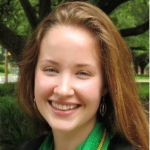 Natalie Garcia is a recent Baylor social work graduate. She and her husband have been stationed at Fort Hood since 2014. She loves science fiction and stand-up comedy. She has rescued two cats in the last six months, and thoroughly expects even more cats to find her in the future.
Natalie Garcia is a recent Baylor social work graduate. She and her husband have been stationed at Fort Hood since 2014. She loves science fiction and stand-up comedy. She has rescued two cats in the last six months, and thoroughly expects even more cats to find her in the future.
The Act Locally Waco blog publishes posts with a connection to these aspirations for Waco. If you are interested in writing for the Act Locally Waco Blog, please email [email protected] for more information.
Notes:
[1] LoveIsRespect.org. Dating abuse statistics. (http://www.loveisrespect.org/resources/dating-violence-statistics/)
By Beth Armstrong
Over the past week, I have scrolled through hundreds of Facebook posts about my friend’s children and their first day back to school photos. It’s one of my favorite times of the year seeing all of the excitement and hope about the year ahead in the eyes of these children: bright, smiling faces holding up signs about what they want to be when they grow up – all dressed up in their new school clothes and with freshly cut hair. As a mom of two little ones myself, how does that not pull at the heart strings just a little bit? One of the things we know of that helps prepare children for a terrific school year is the opportunity to read at home. And, one of the things that helps establish a life-long love of reading is the opportunity to own some books of your very own. The women of the Junior League of Waco want to help make that opportunity available to every child in Waco!
Three years ago, the Junior League of Waco began the process of selecting a single community issue to focus our efforts and resources upon. The 200 plus members chose Early Childhood Education & Development for children ages 0-3 in McLennan County to be the singular area we wanted to improve. We committed for the next 10 years to developing and expanding programs where gaps existed within the current system and establishing successful partnerships where effective collaboration and teamwork could begin. Andrew Carnegie once said, “Teamwork is the ability to work together toward a common vision. The ability to direct individual accomplishments toward organizational objectives. It is the fuel that allows common people to attain uncommon results.” As the Junior League of Waco begins a new League year focused on impacting Early Childhood Education and Development for children ages 0-3, I can think of no better quote to represent the influence that the women of the JLW are having in this targeted initiative.
We have a rich and historical tradition of giving large gifts back to our community over the past 80 years. Whether you visit Anniversary Park in Cameron Park, the refurbished Carousel at the Lion’s Park Kiddieland, or the Butterfly Gardens in the Cameron Park Zoo, there are glimpses across this city of the tireless efforts made by the women of the JLW to improve the lives of the women and children who live here. As we enter into our 80th Anniversary year, we are honored to continue this legacy by gifting the Family Health Center a check for $80,000 to fully fund the return of Reach Out and Read to the children and their parents of Waco. This initiative will put a developmentally appropriate books into the hands of every child ages 6 months-5 years who enters the doors of a Family Health Center clinic during each well-child visit.
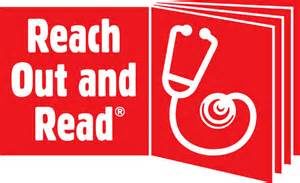 Reach Out and Read began in 1989 at Boston City Hospital. It was started by clinicians, Dr Barry Zuckerman and Dr. Robert Needlman, who were working with very high risk families dealing with poverty and violence in challenging school systems. Together with early childhood educators Jean Nigro, Kathleen MacLean, and Kathleen Fitzgerald-Rice, they introduced the first Reach Out and Read Program at Boston City Hospital (now Boston Medical Center). Dr. Needlman found that parents who are given books and literacy guidance are four times more likely to report reading aloud at home. In 5 short years, this successful program had spread to more than 34 programs in 9 states distributing almost 20,000 books. Now in its 27th year, Reach Out and Read is available in almost 6,000 sites in all 50 states and distributes more than 6.5M books to more than 4.5M children.
Reach Out and Read began in 1989 at Boston City Hospital. It was started by clinicians, Dr Barry Zuckerman and Dr. Robert Needlman, who were working with very high risk families dealing with poverty and violence in challenging school systems. Together with early childhood educators Jean Nigro, Kathleen MacLean, and Kathleen Fitzgerald-Rice, they introduced the first Reach Out and Read Program at Boston City Hospital (now Boston Medical Center). Dr. Needlman found that parents who are given books and literacy guidance are four times more likely to report reading aloud at home. In 5 short years, this successful program had spread to more than 34 programs in 9 states distributing almost 20,000 books. Now in its 27th year, Reach Out and Read is available in almost 6,000 sites in all 50 states and distributes more than 6.5M books to more than 4.5M children.
Andrew Carnegie must’ve had the collaborative efforts of the Junior League of Waco, Family Health Center and Prosper Waco in mind when he said “teamwork is the ability to work together toward a common vision.” This common vision started at the close of the last school year during a fortuitous meeting with the League’s former President, Ellen Derrick, CEO of Family Health Center Dr. Ronald Goeritz, and members of Prosper Waco and their kindergarten readiness working group. While most of our kids were out enjoying the summer break when reading books wasn’t a requirement, the members of this great team have been hard at work with the common objective of getting books into the hands of all kids and to reach uncommon results in the improvement of literacy for ALL of our children.
I know in a few weeks, we’ll have gotten back into our normal routines and will be fully engulfed in the busyness of a new fall school year, but I’d like to invite you to come and join with us as we officially kick off the Reach Out and Read program on Monday, September 26 at 3:30pm at the Family Health Center’s Tom Oliver South 18th Community Clinic (1800 Gurley Lane) where we’ll be celebrating the Junior League of Waco’s 80 years of commitment to this community.

Beth Armstrong has been a member of the Junior League of Waco for 13 years. She now serves as President of the Junior League in addition to her fulltime job. She’s married to Chris, and they have 2 kiddos: Hunter who is almost seven and Ella who just turned two.
The Act Locally Waco blog publishes posts with a connection to these aspirations for Waco. If you are interested in writing for the Act Locally Waco Blog, please email [email protected] for more information.
By Lucas Land
Sustainable is one of those words you hear more and more, but seem to know less and less what it really means. Like “organic”, “green” or “eco-friendly”, sustainable is sometimes applied to products or things that don’t make sense. Can beauty or cleaning products really be called sustainable if they depend on non-renewable resources for packaging or any part of their product? Something can only be called “sustainable” if it does not deplete the resources (from raw materials to packaging to end of life) on which it depends.
In addition to “sustainable” often being used as an advertising gimmick, let me suggest that it is not enough to create a livable future. 70% of the planet’s topsoil, the layer allowing plants to grow, is gone. We are losing topsoil between 10 to 40 times the rate at which it can be replenished. [1] According to the Minerals Education Coalition every citizen of the United States born will use 3.11 million pounds of minerals, metals and fuels in their lifetime including copper, coal, salt, gold, zinc, bauxite and other minerals. [2] Global energy consumption is projected to continue to increase 48% by 2040, yet the U.S. Department of Energy estimates that it takes 300 million years for fossil fuels to form. [3] [4] Our appetite for these energy dense hydrocarbons goes way beyond nature’s ability to form them.
So, you see, the problem is that we are already operating at an incredible deficit and sustaining the current status quo is not enough. What is required for a sustainable future are regenerative systems that work with, rather than against, nature, and that restore the resources and ecosystem services on which we depend. This means rethinking our current systems and ways of life, as well as building new systems with a different set of principles.
This rethinking must include a deeper understanding of what nature provides us and how to protect our particular ecosystem in the Brazos Watershed. It must also provide for the people that live here. We are a part of nature. Although we are capable of the most detrimental effects on the ecosystem, we still have to provide for human needs with these new systems. However, the new systems must find ways to limit what we take from the earth and provide for the needs of everything equally in our community, both human and non-human.
I can hear someone thinking, “That sure sounds nice, but what does it look like in practice?” Glad you asked! Let me give you a couple examples, one big and one small.
First, on a large scale we can look at Waco and McLennan county and ask what are the resources in our bio-region that can help us become more resilient and less dependent on unsustainable practices and resources. The Waco Downtown Farmers Market (http://www.wacodowntownfarmersmarket.com/) has provided a rich environment for local producers to grow their businesses. Many of these, such as Heritage Creamery, source their ingredients and raw materials from other local producers. This helps grow and strengthen our local economy which in turn makes us more resilient as a community.
On a much smaller scale, we can each think about the spaces around the places where we live. For too long the American lawn has served one primary purpose: to be greener and more beautiful than the neighbors. In pursuit of this goal homeowners pour on 10 times more pesticide per acre than conventional farmers in the U.S. [5] Landscape irrigation accounts for one-third of all residential water usage, totaling nearly 9 billion gallons per day. [6] In fact, lawns are the largest irrigated crop in the U.S. covering more acreage than corn, wheat, or soy. [7]
On the other hand, yards are great places to grow food, raise chickens, plant native plants, provide habitat for birds and wildlife, as well as look beautiful and provide space to play and relax. Many plants and trees can serve more than one of these purposes at a time. My rule is that if you have to water it, you should be able to eat it! Rain gardens can be used to better manage storm water and runoff from downspouts and other areas. You can learn more about how to make your lawn more sustainable by getting involved with the HOT Urban Gardening Coalition , McLennan County Master Gardeners and HOT Master Naturalists.
It will take all of us working to change the way we think about our individual choices and the systems that provide both the food, gadgets and transportation we depend on in order to move beyond sustainability to a future where our ecosystem has been restored and our lives work with rather than against nature.
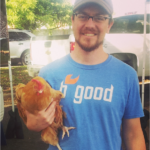 Lucas Land is an eco-theologian, urban farmer, activist, aspiring master naturalist, facilitator, musician, and writer. He is avoiding growing up by constantly learning and trying new things. He also works in Grants Management for Waco ISD. He lives with his wife, three children, flock of chickens, dog, and cat in the Sanger Heights Neighborhood in North Waco.
Lucas Land is an eco-theologian, urban farmer, activist, aspiring master naturalist, facilitator, musician, and writer. He is avoiding growing up by constantly learning and trying new things. He also works in Grants Management for Waco ISD. He lives with his wife, three children, flock of chickens, dog, and cat in the Sanger Heights Neighborhood in North Waco.
The Act Locally Waco blog publishes posts with a connection to these aspirations for Waco. If you are interested in writing for the Act Locally Waco Blog, please email [email protected] for more information.
Notes:
[1] “What If the World’s Soil Runs Out?” in Time Magazine Dec. 14, 2012 (http://world.time.com/2012/12/14/what-if-the-worlds-soil-runs-out/)
[2] http://www.mineralseducationcoalition.org/mineral-resource-statistics
[3] http://www.eia.gov/forecasts/ieo/
[4] http://www.fe.doe.gov/education/energylessons/coal/gen_howformed.html
[5] https://www.fws.gov/raleigh/pdfs/Homeowners_Guide_Frogs.pdf
[6] https://www3.epa.gov/watersense/pubs/outdoor.html
[7] http://earthobservatory.nasa.gov/Features/Lawn/lawn2.php
